Once upon a time wealthy fabric merchants built for themselves a palazzo in then rural 15th-century Milan, where within its gardens Leonardo da Vinci strolled to recharge while working on “The Last Supper” in nearby Santa Maria delle Grazie. Belonging to the court of the Sforzas, the Atellani’s built their palazzo near the noble family seat, Sforza Castle, heralding the projection of Milan’s social life within the palazzo’s walls during the Renaissance. It was here, at Palazzo Atellani, that epicurean banquets and midnight dances in candlelit rooms and in the gardens provided the atmosphere for elegant women meeting honored cavaliers, senators, arms men, and architects of the dukedom. But not for long, as the Sforza dukedome collapsed in 1499 along with their wealth, their palazzo falling into disrepair as the centuries progressed.
Fast forward, 1920: the great grand-uncle of the present owner, who resides on the ground floor with his brothers and sisters, saved the palazzo from further deterioration by purchasing it. Architect and designer Piero Castellini Baldiserra relayed to House Beautiful how “Even as a child in the 1950’s I remember fields of cultivated land just outside the house” – difficult to imagine in the Milan of today.
Piero’s grandfather, the architect Piero Portaluppi, restored and expanded the palazzo in his own free-spirited way beginning in 1920. If his name rings familiar it should: he designed Villa Necchi, its restrained modern glamour made famous once again in the 2009 movie I Am Love.
The magic begins once you leave behind the bustling city streets and enter the ordered decay of the central courtyard, where ancient wisteria frames a tableau of stone carvings, columns and capitals. Throughout the palazzo’s gardens and within its rooms the present owner, Piero Castellini, has curated an expansive collection of Greek and Roman antiquities and a curious assortment of objects.
Utterly breathtaking and fantastical, the oft photographed, published, Googled, and “Pinned” room at Palazzo Atellani is the entrance hall, which the current Piero aptly calls the winter garden. Its trompe l’oeil walls depicting a series of botanical studies were painted in the 1920’s by a pupil of Portaluppi . Set within successive grids to imitate framing, verdant foliage reaches upward toward a faux tented ceiling rendered in the same diluted teal, a “sea” of mosaic “waves” below. Filled with stacks of Castellini’s ancient books, pictures and frames (some empty), and an assortment of curiosities, I am seduced by the mysteries contained within and want to explore its secrets further.
The bronze greyhound once belonged to Maria Callas; Piero Portaluppi designed the mosaic floors.; the Piedmont Carrara marble bust is 18th-century.
A more recent photo taken by Richard Powers reveals a chest displaying Castellini’s collection of busts standing in for a bench piled with books. Through the doors to the left is the sitting room, to the right the dining room.
The latest reincarnation of the winter garden, as featured in the February issue of Italian AD, features a much simplified and lighter aesthetic with fewer collections and provincial painted furniture. While this room would be beautiful empty, I much prefer the mysterious allure of its previous incarnation.
A door bears four original drawings from the book Antiquités étrusques, grecques et romaines tirées du cabinet de M. Hamilton from 1766.
The salon featured butter yellow walls and striped silk curtains in Tivol from Lelievre and a rich pairing of furnishings when first published by House Beautiful in 2004, including a Louis XII stool as coffee table, a Louis XVI armchair from Piedmont covered in vintage needlepoint, and a custom sofa covered in a deep goffered velvet.
Still later, the sitting room retained its Italian noble grandeur and interesting mix of styles and periods, as photographed by Richard Powers in the above two images.
In an early photo ochre silk curtains and Venetian red lacquered 18th-century dining chairs counter the cool minty green walls – which apparently read darker here than in reality. Many of the fabrics, such as the striped silk covering the dining chair in the foreground, come from the Castellini family line of textiles, C&C.
A later photo of the dining room by Richard Powers insinuates a change in color for the walls from green to gray but a recent photo, below, suggests otherwise. It might be agreed that this last photo of the dining room exhibits the true mint green described by House Beautiful.
The dining room appearing much as it did when first photographed eleven years ago.
Alternating stripes of a blue and green wallpaper by Tessuti Mimma Gini cover the walls of the family sitting room, featuring a grand walnut and oak bookcase from a Tuscan pharmacy beneath portraits of famous Italian painters of the 16th, 17th and 18th-centuries, and Piero’s collection of 1600 pieces of marble excavated from the ruins of ancient Rome (top three photos). Beyond the red silk covered chaise longue is the family dining room.
A hand-painted forest scene in the family dining room invokes the rural elegance of an Italian country house. The inlaid doors are surrounded by Fior di Pesco marble.
In the sala dello zodiaco zodiac symbols designed by Piero Portaluppi decorate the walls and floors.
Another dining room, perhaps the breakfast room, was photographed by Richard Powers and, as with many of the photos he photographed, discovered at The Caledonian Mining Expedition Company blogpost.
In a bedroom a painted settee covered in Pierre Frey’s toile de Nantes is accented with pillows covered in the family’s C&C Caramel silk.
One of the bedrooms, as photographed by Richard Powers.
A view of the palazzo and its gardens as photographed by Richard Powers.
And again here, as photographed by Piero’s daughter Olympia for Italian AD.
Photos by Simon Watson for House Beautiful, September 2004
First photo by Davide Lovatti for T Magazine, March 1, 2013
Piero’s daughter, Olympia, photographed his apartment for the February, 2015, issue of Italian AD and is the author of her own blog, Milly and Olly.











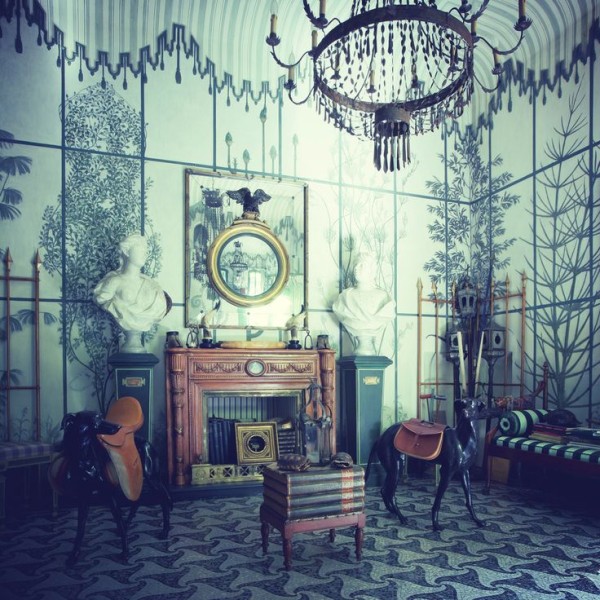
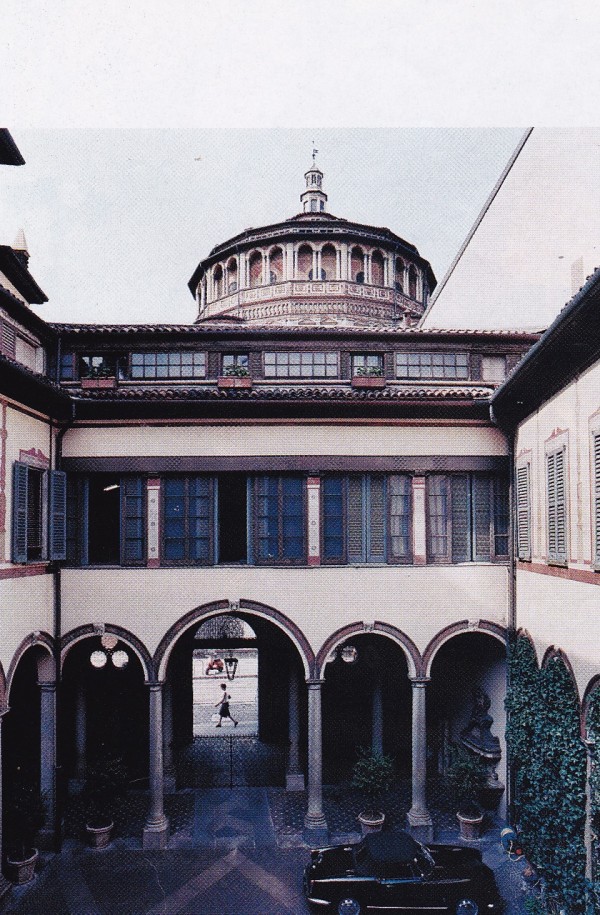
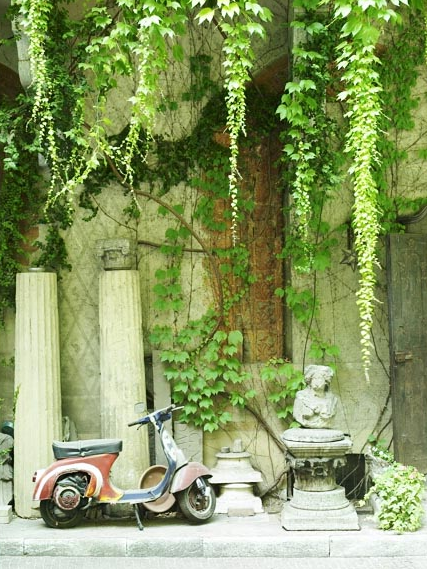
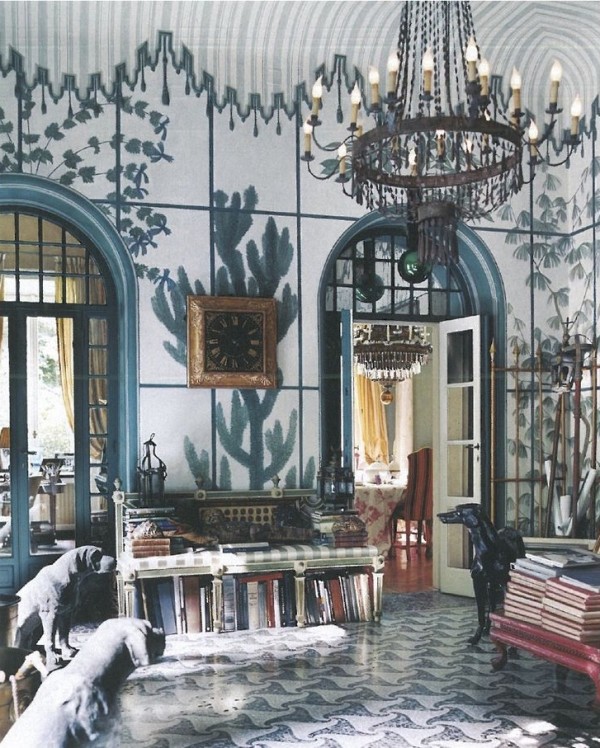
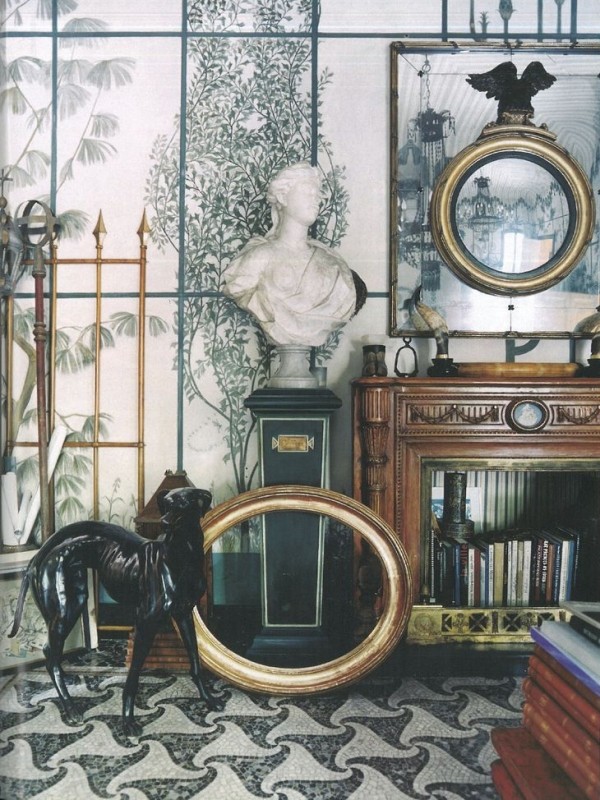
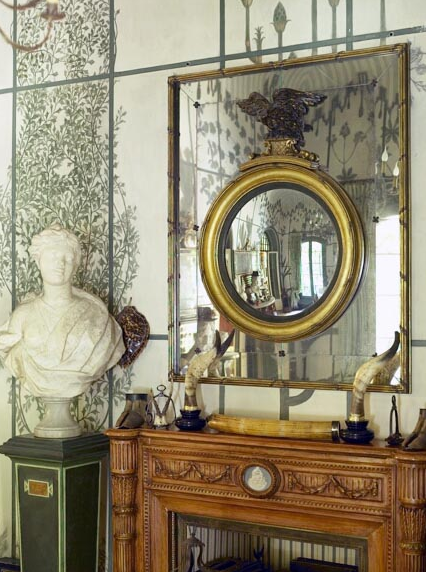
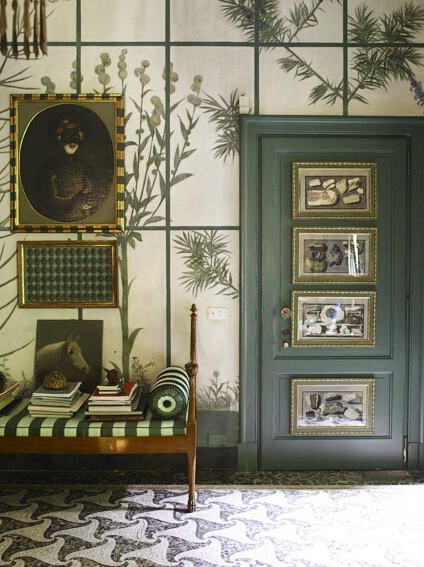
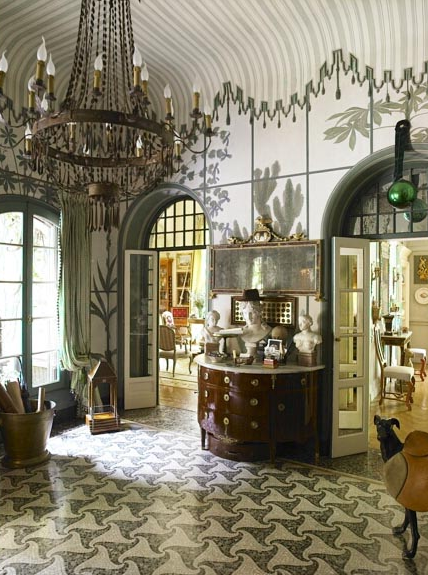
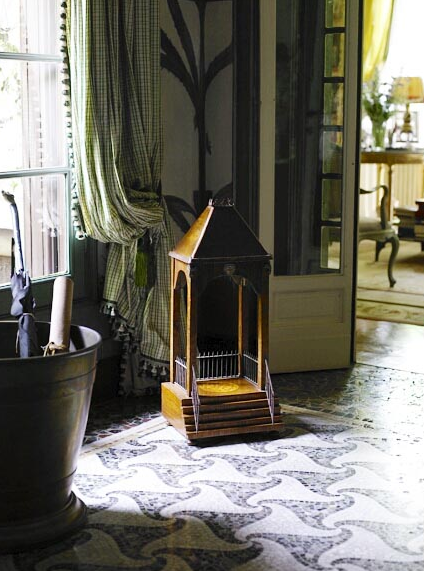
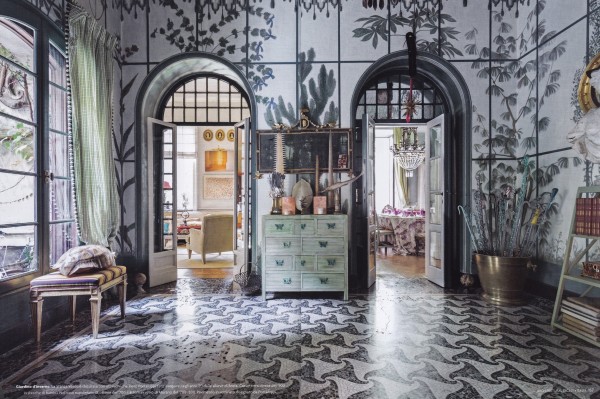
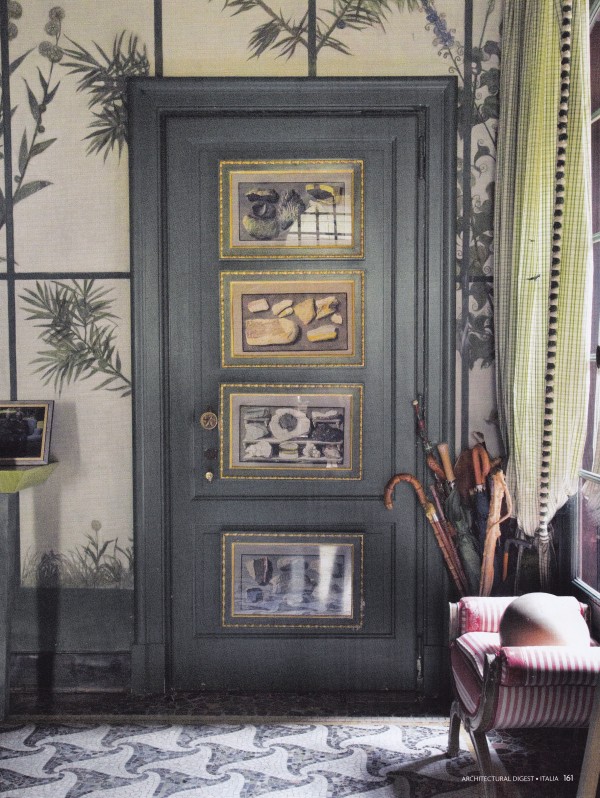
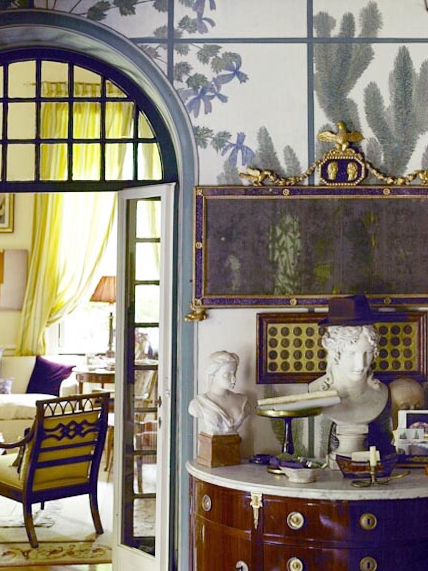
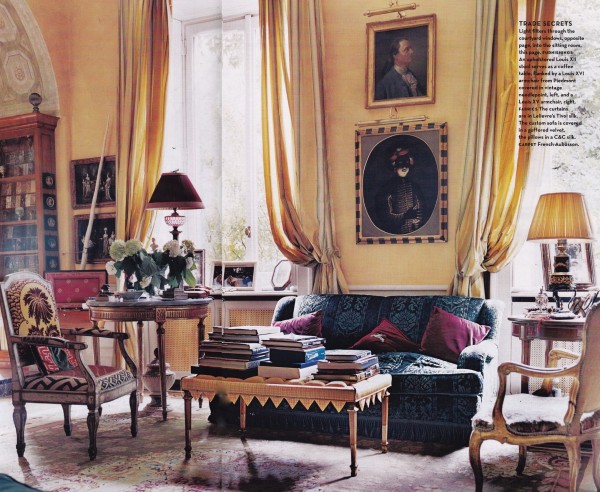
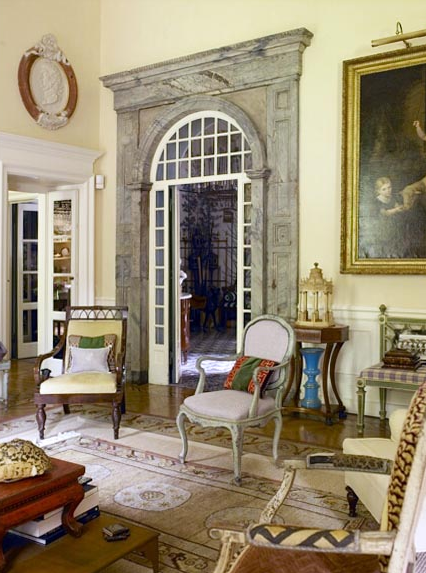
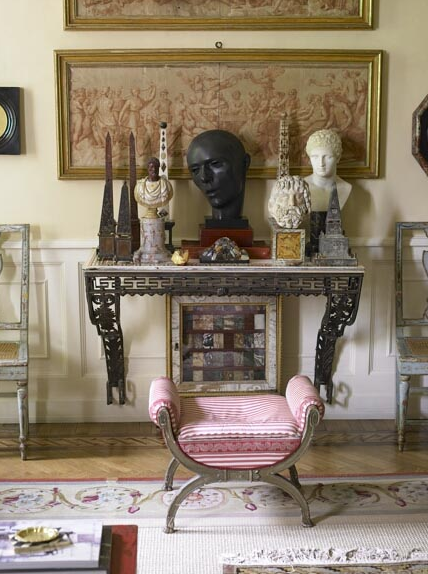
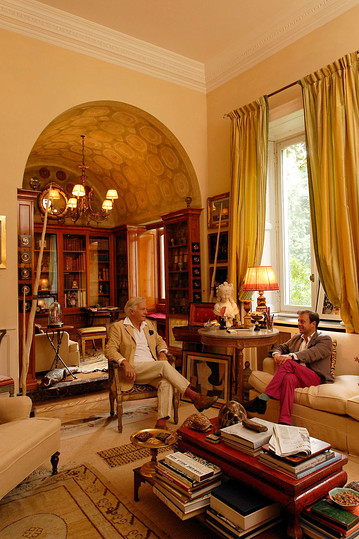
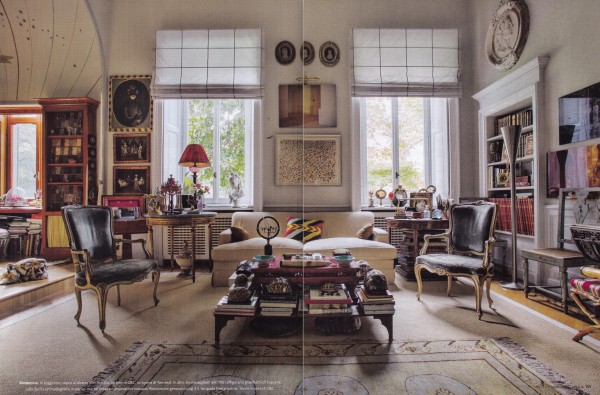
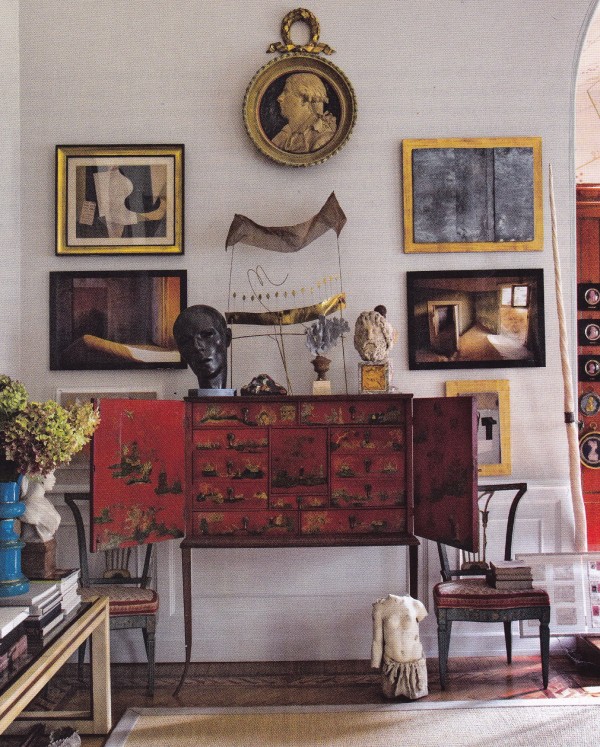
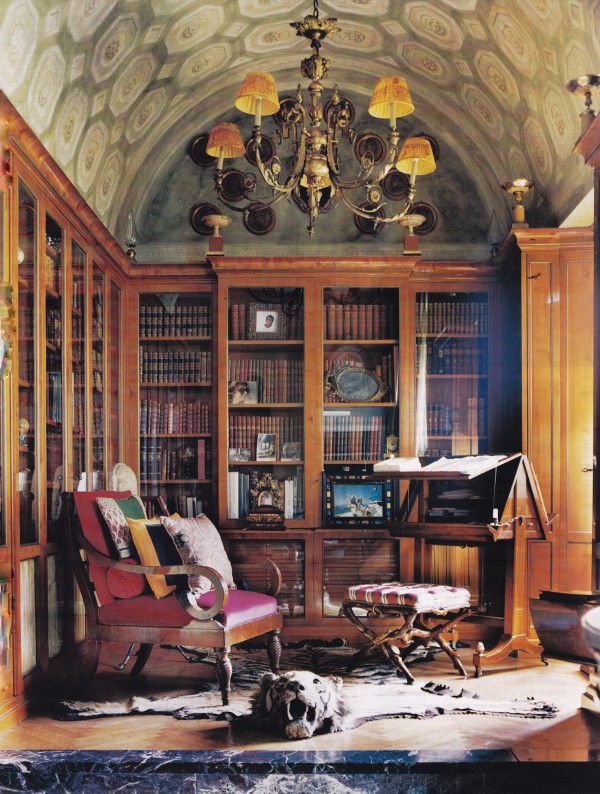
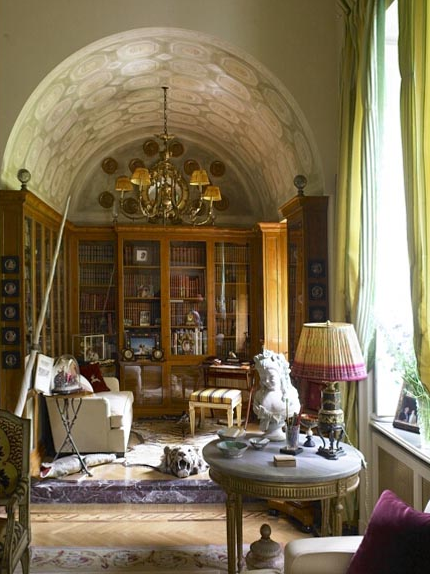
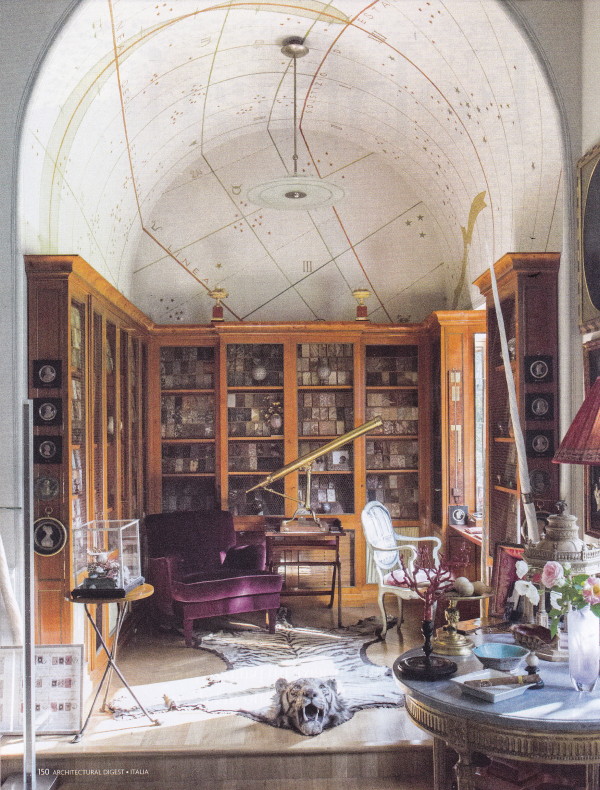
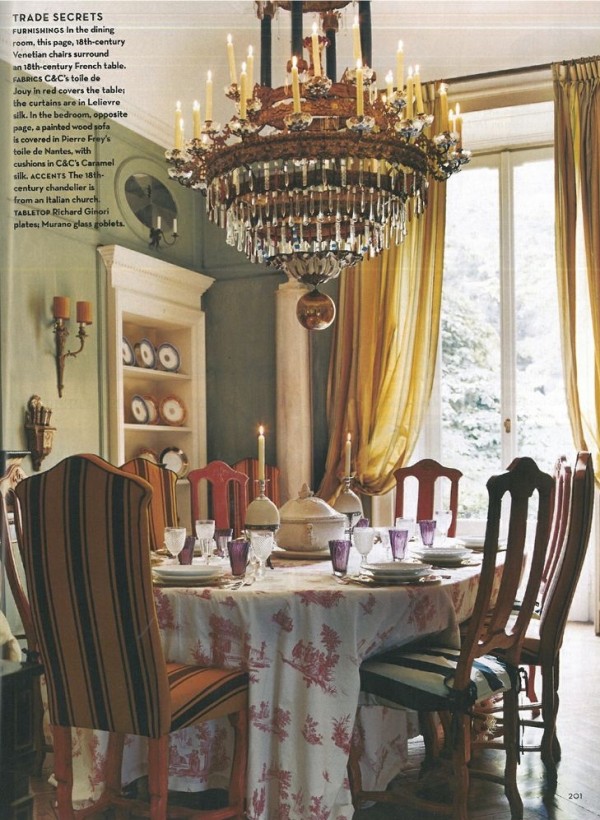
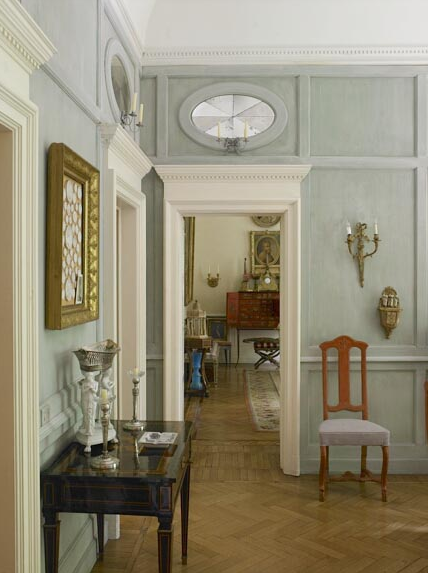
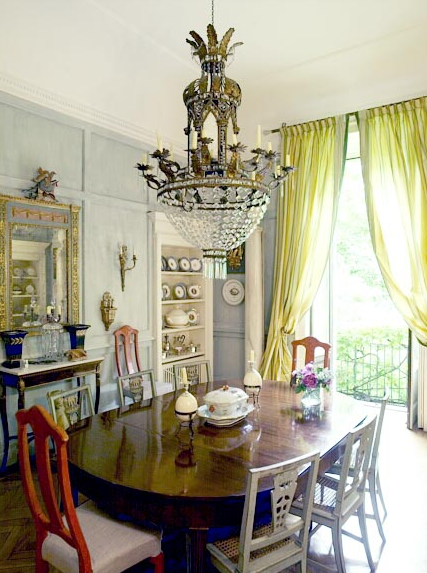
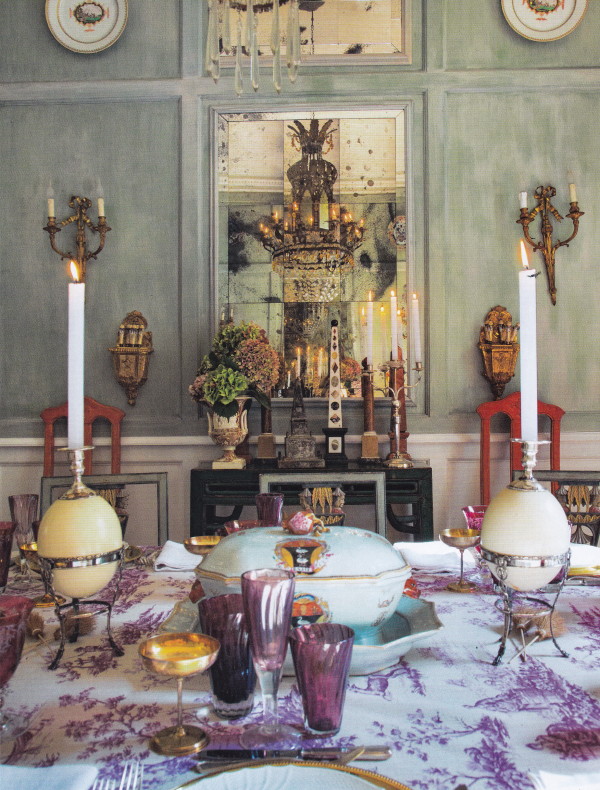
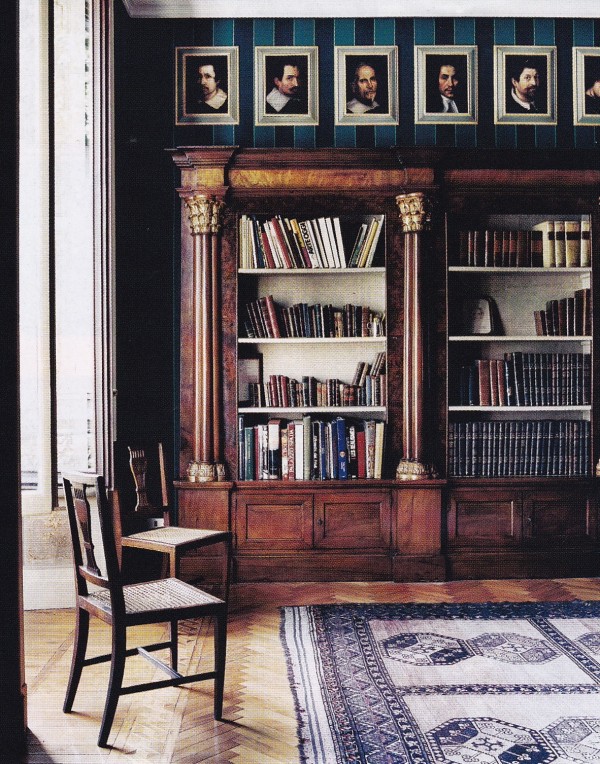
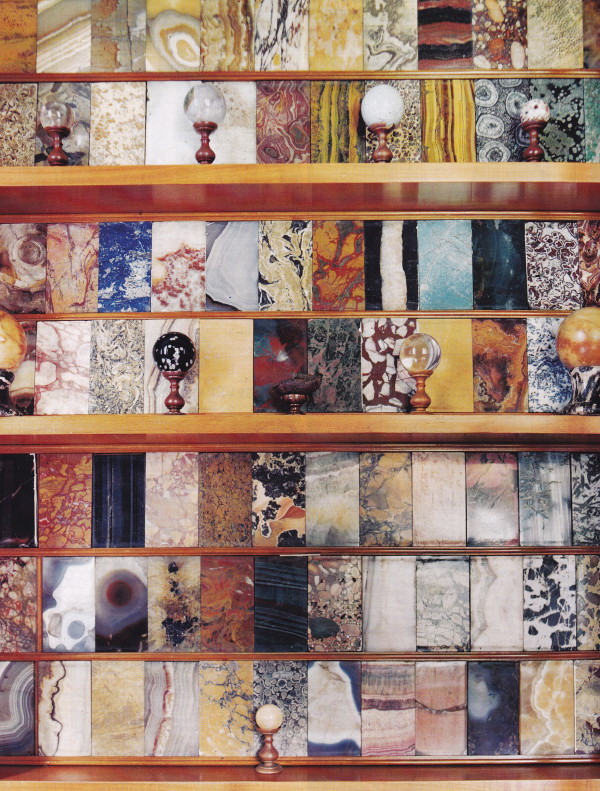
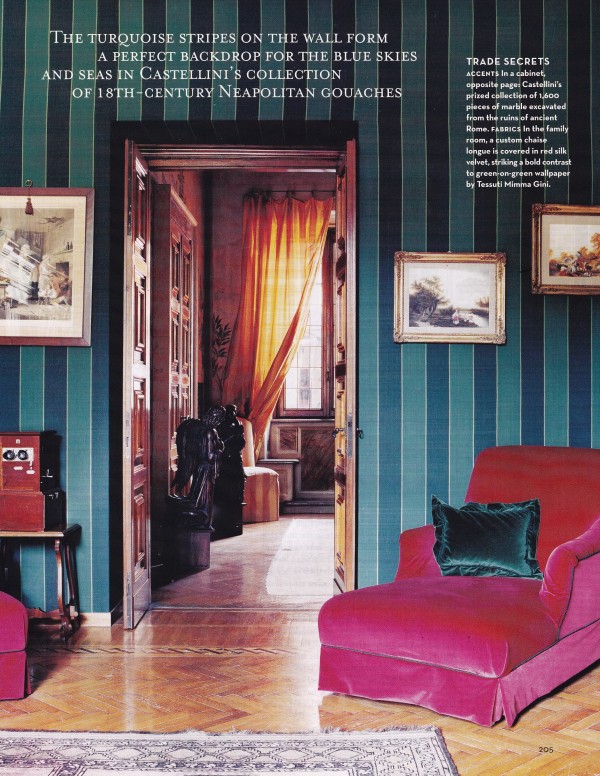
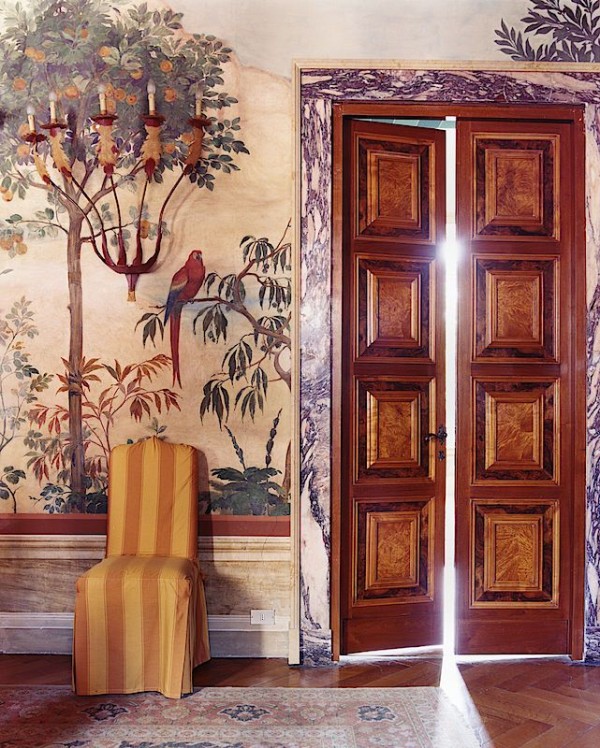
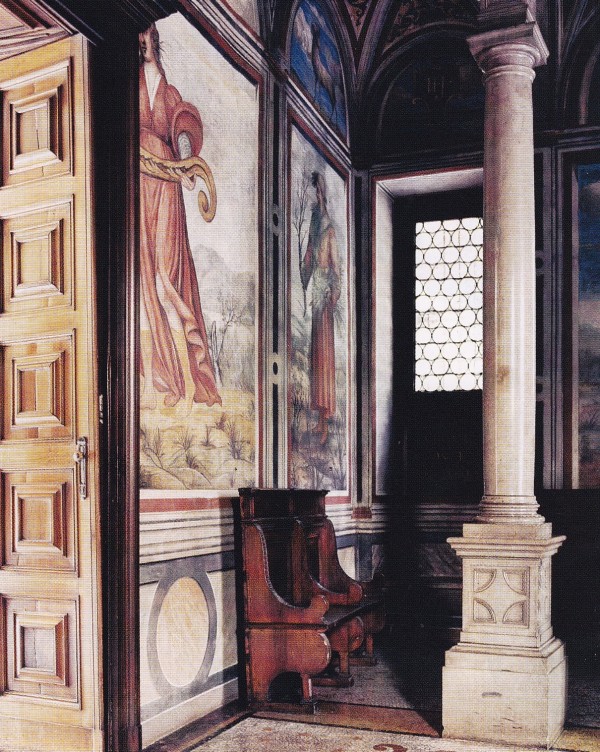
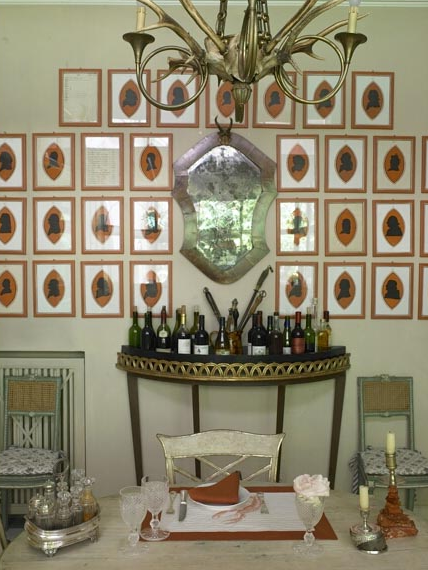
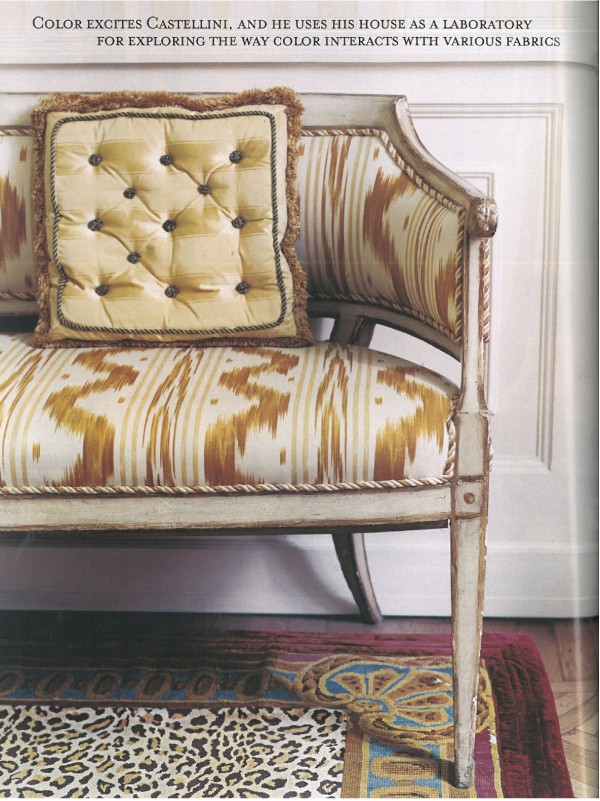
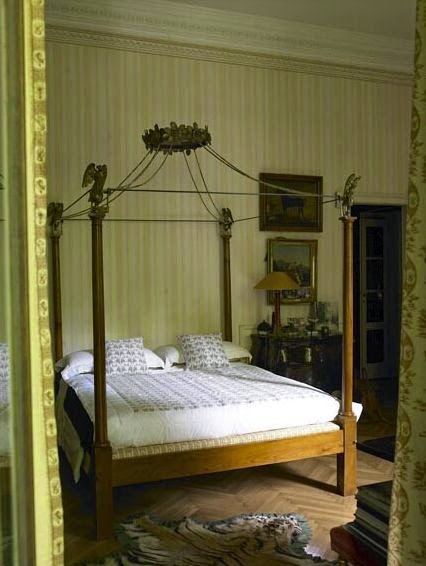
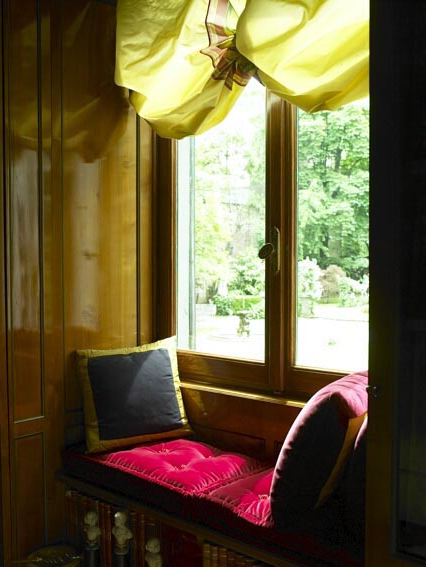
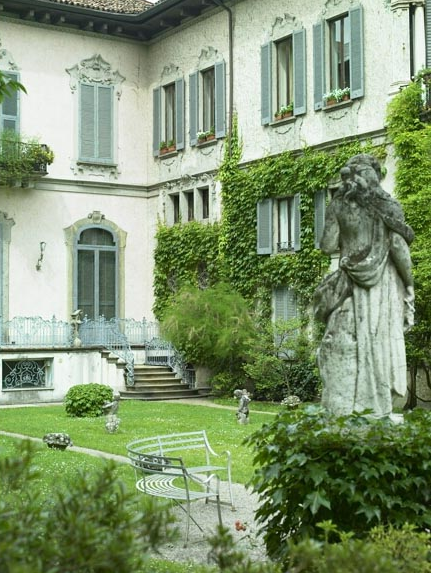
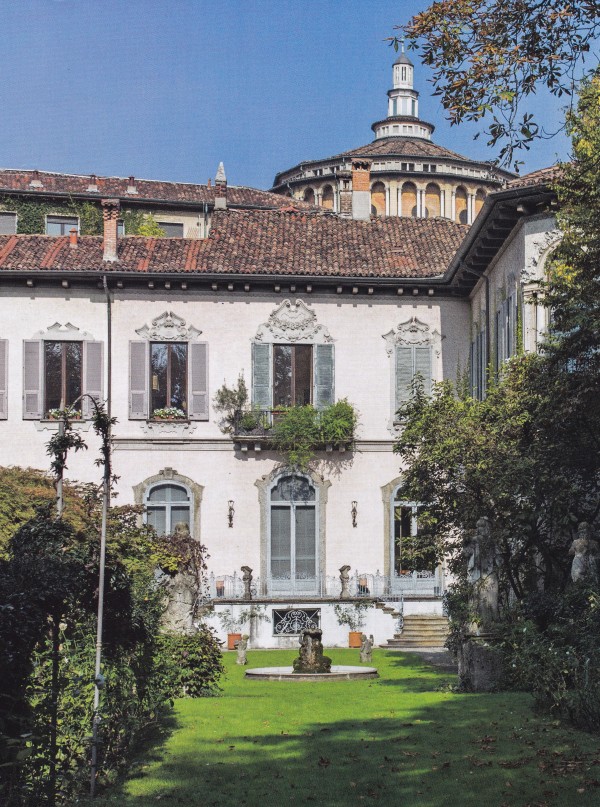
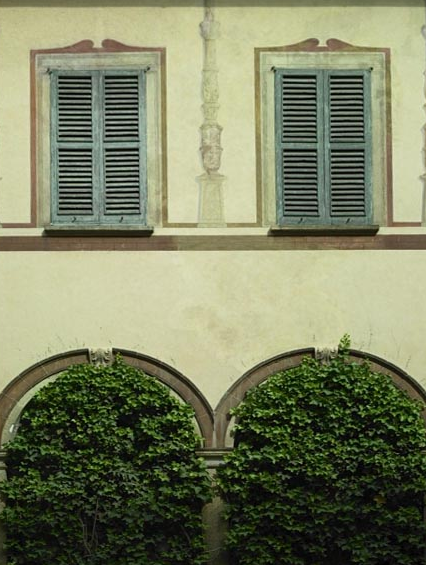



“Dreams” indeed! Has there ever been a more consistently brilliant series of rooms than in that house?
The first and most famous image of the Winter Garden must surely be engraved on the memories of anyone who loves interior decoration, but to see its permutations, and the subtle changes in several of the other rooms, simply expands one’s understanding of the whole remarkable scene. Many thanks, once again, for a post which delves deep into the subject and goes way, way beyond mere “pinning”.
One of the captions references I Am Love– was the Palazzo used as location shots? I only recall the Art Deco building (name escapes me) and one more question, were Piero and Nicola in the film???
PS
If ever there was an argument for fine architecture as support to the whims of decorating, it must be that barrel vaulted ceiling of the library off the sitting room. The sunk medallions of the first scheme are so logical, so right, that it might seem utterly perverse to have replaced it with an altogether different design— yet in its own quirky way, the new design is every bit as successful in its rigorous linear simplicity. Nor has the introduction of modern pictures and furniture in the adjacent room been in any way insensitive or for that matter a victim of trends. There seems to be an indefinable aesthetic holding sway in these rooms, to do with assurance, conviction, and dedication.
Dear T. W.,
When I wrote this post I was in stream-of-consciousness mode, I suppose, after having mentioned Villa Necchi – the Art Deco villa featured in I Am Love – in my post “The Louche Life”. Piero Castellini’s palazzo apartment was also featured in a brief scene as the home of the matriarch of the fictitious textile dynasty (but perhaps closer to a roman à clef in its eery similarity to the Castellini family’s own personal story). Thank you for your delightful and illuminating comments once again!
CW
TW, I quite agree across the board with your every observation and elucidation! In the case of the winter garden I do much prefer the cabinet de amateur Castellini affected with a layering of curiosities, and the inclusion of rich wood furniture to set off the cool greens of the “foliage”. It also feels more masculine than its present state. Having said that, the fact remains that this room would move me to tears were it empty! And I quite agree with regard to your comments pointing to the murals on the barrel vaulted ceiling of the library: while the earlier design is consistent with Italian architecture of this kind it was not original to the house, and the current design is very in keeping with both ancient and modern design. I’m almost certain Galileo would approve, as would Gio Ponti! For me, the jury is still out on the simple grid-pattern of the roman shades in the main salon, though the pale limestone palette and mix of modern art and artifacts does speak to my own design sensibility of mixing things up. Not one for decorating by numbers, Villa Atellani is an absolute dream!
Thank you, TW, for yet another illuminating and delightful exchange!
CW
Was like a visual walk down memory lane.
Thanks,
Olimpia
Dear Christopher,
I have to admit that I have been on a bit of a hiatus from blogging and have missed reading your own. However I just indulged the last hour by getting caught up on your posts! The Palazzo Attellani is truly a sumptuous feast for the eyes and I had to pin just about every image for my inspiration files! The details are beyond beautiful! Thank you for sharing these magnificent images. I also have to commend you on your brilliant writing. You have a real gift for understanding and describing the soul of a place so appropriately! Have you ever lent your talents to magazines? I think you would be a perfect contributing writer to a number of design magazines. Perhaps a book is in your future??
Thanks again for your recent posts and look forward to more!
Best,
Michael
Dear Michael,
I am overwhelmed with gratitude for your generous comments, compliments and continued support! My passions have always been design, art and writing and it brings me great satisfaction to receive such positive feedback, especially from those like yourself whose work I greatly admire and respect. It has occurred to me to pursue writing for magazines but, to tell you the truth, sometimes I wonder how I would fit it in. But thank you for reigniting this light … I may just reconsider it!
I hope you don’t wander too far from blogging. I so look forward to your posts! I don’t keep to a schedule myself out of necessity so I can keep focused on work and other creative pursuits. I blog for pleasure and to share with others, like yourself, the wealth of material I possess in “the world of interiors”. I am not necessarily interested in becoming a full fledged “professional” blogger who hits the circuits!
Thank you again for your spirited response!
Warmest,
Cristopher